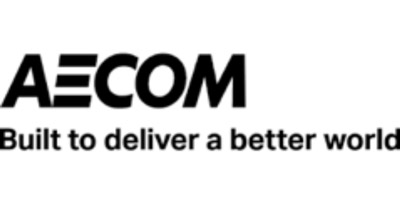MBA Consulting Projects
Student Research
Selected Publications by Cal State LA Graduate Business Students and Faculty Mentors
ORGANIZATIONAL DIAGNOSIS OF YAMIBUY
by
Arnold San Diego, [email protected]
Michelle Miranda, [email protected]
Yiqing Ji, [email protected]
Jiahui Hong, [email protected]
Gabriel Romero, [email protected]
Yamibuy is an online retailer of products and snacks with a target market of Asian-Americans and Asians in the United States. In this consulting project, MBA students prepared an organizational diagnosis and overall evaluation of Yamibuy. The research included
the company’s business strategy and business processes, analysis of key areas such as the external environment and how Yamibuy performs in comparison to its competitors, diagnosis of its organizational culture and structure, its financial performance, its supply chain operations, selected human resources processes, IT operations, and an evaluation of its marketing mix. Conclusions and recommendations were presented to the company CEO.
WHAT’S NEXT FOR SCHARP?
AN ORGANIZATIONAL DIAGNOSIS OF THE SOUTHERN CALIFORNIA HEALTH AND REHABILITATION PROGRAM
by
Greg Lenardson, [email protected]
Xiaobai Li, [email protected]
Neel Patel, [email protected]
Priya Sharma, [email protected]
Cece Song, [email protected]
Richelle Toriyama, [email protected]
The Southern California Health and Rehabilitation Program (SCHARP) organization provides mental health, behavioral health, rehabilitation services, and housing placement services for the vulnerable ethnic minority population of South Los Angeles. SCHARP was considering expanding its services by integrating full-time Primary Care Service in addition to its existing programs.
The consulting project examined SCHARP’s mission, vision and organizational culture, as well as the leadership and conflict management styles of its leaders. The project examined the business strategy and resources in order to assess whether integrating full-time primary care would be sustainable and financially appropriate for SCHARP. An analysis of the facility and staffing requirements was conducted to determine necessary personnel and capacity to meet the patient volume. SCHARP’s current primary care services and operational procedures were evaluated to find potential improvements in quality and efficiency, as well as service quality using the SERVQUAL framework. Finally, a marketing plan was developed based both an internal and external perspective to approach potential new clients. Results were presented and discussed with SCHARP’s senior management.
ORGANIZATIONAL DIAGNOSIS OF LUCY PARIS
by
Lei Fu, [email protected]
Rachel Rivera, [email protected]
Danielle Mullen, [email protected]
Nganga Alyce, [email protected]
Xuezhen Liang, [email protected]
In this consulting project, candidates for the MBA degree prepared an organizational diagnosis and overall evaluation of Lucy Paris, the apparel company. Both outside research and company information were collected to analyze the company’s current business strategy and business processes, including a review of Lucy Paris’ performance relative to its competitors, Lucy Paris’ business strategy, its organizational culture and structure, supply chain operations, its marketing mix, as well as an internal financial analysis. Conclusions and recommendations were presented to the company CEO.
ASSESSMENT AND EVALUATION OF AECOM & PROJECT MANAGEMENT/CONSTRUCTION MANAGEMENT (PMCM) SERVICES DIVISION
by
Rosemarie Ampil, [email protected]
Marcos Lopez, [email protected]
Michael Rogers, [email protected]
In this consulting project, candidates for the MBA degree prepared an organizational diagnosis and overall evaluation of AECOM and one of its regional business lines, Western Region Project Management/Construction Management (PMCM) Services division. Both outside research and company information were collected to analyze the company’s competitive advantage, key markets, marketing mix, organizational structure, corporate social responsibility and financial performance compared to the industries it serves. Conclusions and recommendations were presented to the company executives.
OH MY ANALYSIS: ORGANIZATIONAL DIAGNOSIS OF OH MY GREEN, INC.
by
Jessica Lau, [email protected]
Linda Gip, [email protected]
Marianne Supnet, [email protected]
Oliver Palan, [email protected]
Ray Darin, [email protected]
Robert Ronquillo, [email protected]
The analysis provided an overview of Oh My Green's industry and how the company fit into the industry. More specific analysis was completed on Oh My Green's potential expansion to the LA area and how that might be accomplished. The project also analyzed Oh My Green's accounting performance, marketing mix, human resources, use of Information Technology and corporate social responsibility.
LOS ANGELES FIRE DEPARTMENT: DIVERSITY IGNITES DISCRIMINATION
S. McGuire, J. Yoon, P. Robbins, O. Babaian, F. Iniguez, V. Koshkaryan, M. Pelayo & T. Sogomonyan (2018). Journal of Case Research and Inquiry, 4: 130-158.
http://www.jcri.org/cases/2018/LAFD%20JCRI%20CASE.pdf
Located in a “salad bowl” of ethnic communities, the Los Angeles Fire Department (LAFD) was the second largest municipal firefighting force in the United States protecting over four million people. The Department’s Engine Company No. 1 was established in 1887. In 1972, the federal government filed a lawsuit against Los Angeles claiming that the city discriminated against Blacks, Latinos, and Asians. As a result, the LAFD adopted an Affirmative Action Program and created a Minority Recruitment Unit to improve the recruitment of members of underrepresented demographic groups.
Although the Department in recent years had members representing every ethnic group in the city, the LAFD faced many internal issues regarding recruitment of women, harassment, gender discrimination, and changing its male-dominated culture to embrace diversity. A series of events, including numerous lawsuits that took a toll on the City’s taxpayers, hindered the growth of minorities in the LAFD program, and resulted in very few women passing the qualifying examinations. In 2018, Fire Chief Ralph Terrazas unveiled the departments’ 2018-2020 strategic plan, which included a firefighter recruitment plan.
How could LAFD optimize its recruiting efforts to women and ethnic minorities? What changes to human resources policies could the department make to increase diversity and to promote an organizational culture of inclusion? What else would Fire Chief Terrazas need to do?
dUSITD2 CONSTANCE HOTEL PASADENA
Y. Zhang, S. McGuire, K. Kwong, N. Gosalia, M. Tiwari & N. Abousaidi (2018). Journal of Case Studies, 36(2): 22-52.
http://www.sfcrjcs.org/index.php/sfcrjcs/article/view/565/427
Singpoli CEO Kin Hui had acquired a choice property in Pasadena, California, on which he designed a brand new boutique hotel. Hui bought a dusitD2 franchise for a fraction of the cost of a Marriot or Hilton franchise. In 2018 the hotel boasted a 75% occupancy rate, a 4.5 rating on TripAvisor, and delighted customers, and was planning to double the number of rooms. The decision to buy a dusitD2 franchise appeared to have been very wise. Was it? The case provides an overview of the boutique niche in the hotel industry, a review of franchise agreements, and an explanation of the performance metrics used in the industry. It describes the hotel’s operations and the major marketing actions.
TRAINING IN READMISSION REDUCTION IN AN INDONESIAN HOSPITAL
Simorangkir, H. & S. McGuire (2017). Hospital Topics, 95 (2): 40-50.
https://www.tandfonline.com/doi/abs/10.1080/00185868.2017.1300477?journalCode=vhos20
The authors implemented a new discharge protocol to reduce readmission rates in a hospital in West Java, Indonesia. Forty nurses were trained in the use of the protocol. Results indicate that posttest group readmission rates were significantly lower after the implementation of protocol, from 6.11% to 4.21%. The protocol was effective in reducing readmissions for patients discharged from internal medicine, pulmonology, and women. Differences were also found by type of insurance or payment method, generally suggesting that the lower the socioeconomic status of the patients was, the more effective the discharge protocol was.
HUY FONG FOODS’ SRIRACHA: IRWINDALE TURNS UP THE HEAT
E. Drost, S. McGuire, K. Kwong, Y. Zhang, N. Abousaidi, N. Tamekuni, C. Gandara, J. Shinn, P. Sanchez & T. Gray (2017). Journal of Case Research and Inquiry, 3: 47-89.
http://www.jcri.org/cases/Huy%20Fong%20Foods%20Sriracha%20JCRI%20CASE.pdf
In 2016, the city of Irwindale, California filed the second lawsuit in 2 years against Huy Fong Foods. In 2014, the city had sued the first time, had and even considered passing a resolution declaring Huy Fong Foods a “public nuisance.” Huy Fong Foods countersued, claiming that the city had embarked on a campaign of harassment against it. Huy Fong Foods was the manufacturer of Sriracha, the famous hot sauce made from jalapeño peppers. Residents of Irwindale complained to the city that the strong odors of the peppers emanating from the factory constituted pollution, endangered their health, and lowered their quality of life. David Tran, the company founder and CEO, concluded that Irwindale was “openly hostile” to Huy Fong Food’s business interests. Tran was considering the merits and inconveniences of relocating his factory, after having invested more than $50 million in Irwindale. To make matters more complicated, in August 2017, Huy Fong Foods sued Underwood Ranches, the company that had supplied its chili peppers for over 30 years, for alleged breach of production agreement, breach of contract, and civil theft. According to the lawsuit, Underwood Ranches refused to pay Huy Fong Foods over $1.4 million in overpayments and to return some $7 million in equipment. Irwindale had turned up the heat.
GEOLISTENING AT THE GLENDALE UNIFIED SCHOOL DISTRICT
S. McGuire, S., Y. Zhang, C. Jin, M. Tiwari, N. Gosalia, S. Dowiri & V. Bhamidipati (2017). Journal of Case Research and Inquiry, 3: 188-215.
http://www.jcri.org/cases/Geo%20Listening%20GUSD%20JCRI%20CASE.pdf
In Glendale, California, a 15-year old boy killed himself by leaping off the roof of his high school in front of horrified classmates and teachers. The underlying causes of the suicide were not immediately clear, but one classmate attributed it to bullying. In response, in 2013 the Glendale Unified School District (GUSD) hired Geo Listening for a pilot project to monitor the online use of Facebook, Instagram, YouTube, Twitter, and blogs of about 14,000 middle and high school students in an attempt to detect bullying, threats, depression, and substance abuse. Geo Listening, a social media monitoring company that monitored, analyzed and reported adverse social media from publicly available student posts, provided a daily report to school principals. The District justified the project on the grounds of ensuring student safety as well as compliance with Glendale schools’ code of conduct. The pilot project was extended, renewed, and remained in place in 2017-18. GUSD had decided that it needed to take action to protect the school children. Was it the district’s responsibility to monitor kids’ use of social media – on and off school grounds? How much privacy did students have a right to? And even if GUSD could monitor kids’ social media behavior, would doing so really keep them safe?
THE IMPACT OF CULTURAL VALUES ON TURNOVER INTENTIONS OF HEALTHCARE PROVIDERS IN SAUDI ARABIA AND THE UNITED STATES
H. Almutairi (2015). Management Education: An International Journal 14 (2): 19-34.
The main reason an employee will leave a job is that he/she is not satisfied with the job. This dissatisfaction can be the result of several situations, such as lack of trust in the management, lack of communication among peers or with the management, conflicts in the workplace, poor treatment or bad attitudes from the management, including nepotism and favoritism (work environment), and dissatisfaction with the pay, compensation, the location of the job, the workload, or the workflow. All those reasons “as perceived” can lead to a lack of trust in management, and therefore, lack of commitment to the organization, and low job performance. The main reason an employee will leave a job is that he/she is not satisfied with the job. This dissatisfaction can be the result of several situations, such as lack of trust in the management, lack of communication among peers or with the management, conflicts in the workplace, poor treatment or bad attitudes from the management, including nepotism and favoritism (work environment), and dissatisfaction with the pay, compensation, the location of the job, the workload, or the workflow. All those reasons “as perceived” can lead to a lack of trust in management, and therefore, lack of commitment to the organization, and low job performance. This study shows that lack of trust in management does not affect turnover intentions among the American sample whereas it is important for the Saudi respondents to trust their management to stay in the job. However, trust doesn’t affect the job performance for either sample. Moreover, employee performance did not affect turnover intentions in both samples. Prior studies; (such as Fletcher and Williams, 1996) have shown that job satisfaction is highly correlated to organizational commitment which means that employees who are highly satisfied with their job will be more likely to be loyal and committed to the organization. These findings have been replicated in this study which shows that there is a correlation between trust, job satisfaction and organizational commitment, and between turnover intentions, organizational commitment and job satisfaction. It also adds one more factor to the analysis of employees’ intentions to leave or stay at a job: their cultural values. This study examines whether there is a correlation between turnover intentions and employees’ cultural values. Cultural values were measured along the dimensions of masculinity vs. femininity, Facework, and Power Distance. One dimension added to the cultural values was nepotism. The resource of cultural values were not reliable for the sample in this study.




